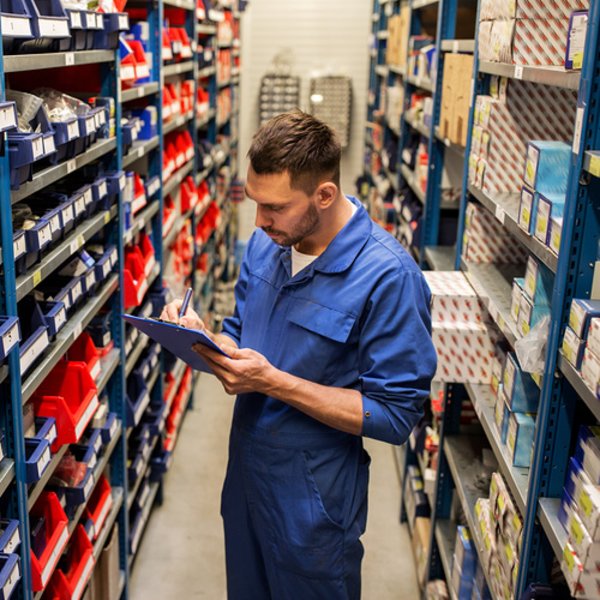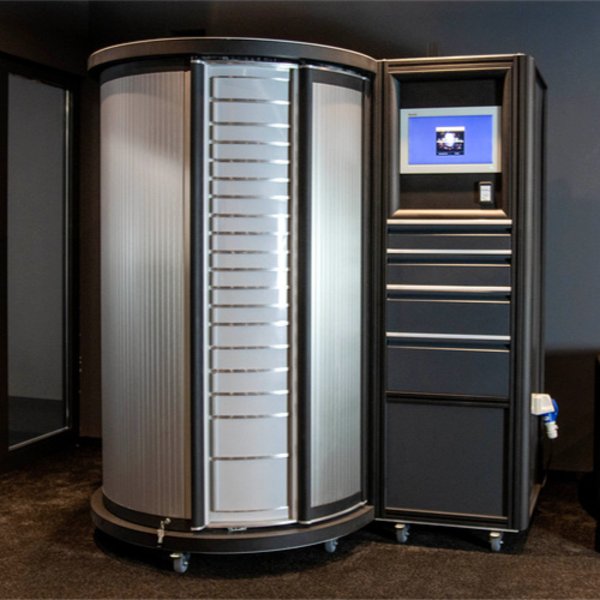IoT applications in production and logistics

Logistics
Initial situation
Everyday life in the procurement of C-parts and the subsequent logistical processing is a challenge. Even more, dynamic production processes require flexible solutions to provide the required materials at the right place and at the right time.
Working on future concepts is difficult in everyday business, in addition to missing spare parts, impending production disruptions, and many ad-hoc requirements. A way must be found to gain time and capacity.
The term Industry 4.0 is on everyone's lips and the task of identifying recurring processes and exchanging them with digital solutions is omnipresent. The question of which system is the right one and where to start is justified. The investment cost factor should not be ignored.
Lingemann develops networked systems to support you.
Analysis by Lingemann
The priority is the analysis of the existing processes. Where are the starting points for introducing automated solutions? The order processes are mostly solved digitally in the ERP or upstream e-procurement systems. Some of the productions themselves are very modern and the products travel from machine to machine on production lines, with robots taking over production steps.
A different picture emerges in the areas of warehouse and logistics. The path of a material requirement from the consumer or a change in inventory in the warehouse to the procurement processes of the ERP system is often solved manually.
There are many solutions on the market, above all the use of dispensing machines is becoming increasingly popular. The big disadvantage is that these solutions cannot cover all storage situations. For a smaller part of the plant or a department, a machine is simply oversized and too expensive, bulky products cannot be managed.
Implementation
When looking for a suitable solution, Lingemann did not find anything on the market and therefore decided to develop its concept.
In a project with an automotive supplier, roll-through shelves are monitored by distance sensors. The individual rows of the shelf hold 5-10 units, depending on the package size. A BOOST.Sensor, for example, is attached above the third package in the row and measures the distance below. As soon as the stored distance of 20 cm is exceeded, the system triggers a logistics order for the missing stocks.
Another application example of the products is the management of measuring equipment via the BOOST.Box. The loaner devices are removed from the locked BOOST.Box through an RFID chip and booked in again after use. The traceability is guaranteed and the monitoring of maintenance or calibration intervals is greatly simplified.
With the BOOST.Button we optimize not only order requirements but also information processes. Within a logistics control system, a push notification on the smartphone signals with one click that a production product has to be transported from A to B, and a new transport container is required. In the same system, withdrawals from first-aid kits are also recorded and transmitted to a service provider for control.
Operation and ongoing optimization
With our products from Boostrack solutions GmbH, we can carry out a dynamic data comparison along the value chain, i.e. continuous and automatic updating of the data about the current database. The software used includes the functions of delivery and production overview as well as bottleneck monitoring and inventory optimization.
From the initial meeting through implementation to on-site support in the specialist departments, a contact person is at your side at all times. Together with Lingemann, they make digitization visible in your company.
Measurable success
First and foremost, our customers save time and increase the process and inventory security. Our concept takes over the often manual steps from the physical changes in stocks or logistics situations to the software processes of the ERP systems.
The authentication at the extraction systems increases the traceability. The BOOST software uses predefined minimum stocks to determine current requirements and automatically triggers subsequent processes such as necessary requirements. In this way, we avoid material bottlenecks and ad-hoc procurement processes.
Another important aspect is the mobile and decentralized approach to make long walking distances for the supply of production and consumable materials superfluous. Since communication takes place via WiFi, no complex cabling is required. The narrowband/LTE network will be used in future product versions.
From the BOOST.Tower dispenser to the BOOST.Sensor, all BOOST components are managed within a software interface so that there are no isolated solutions for the various applications.
Case Study (PDF)







